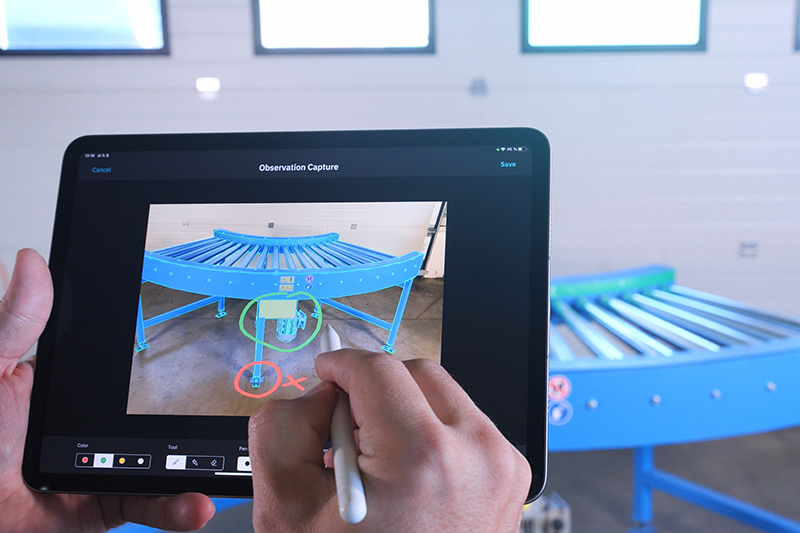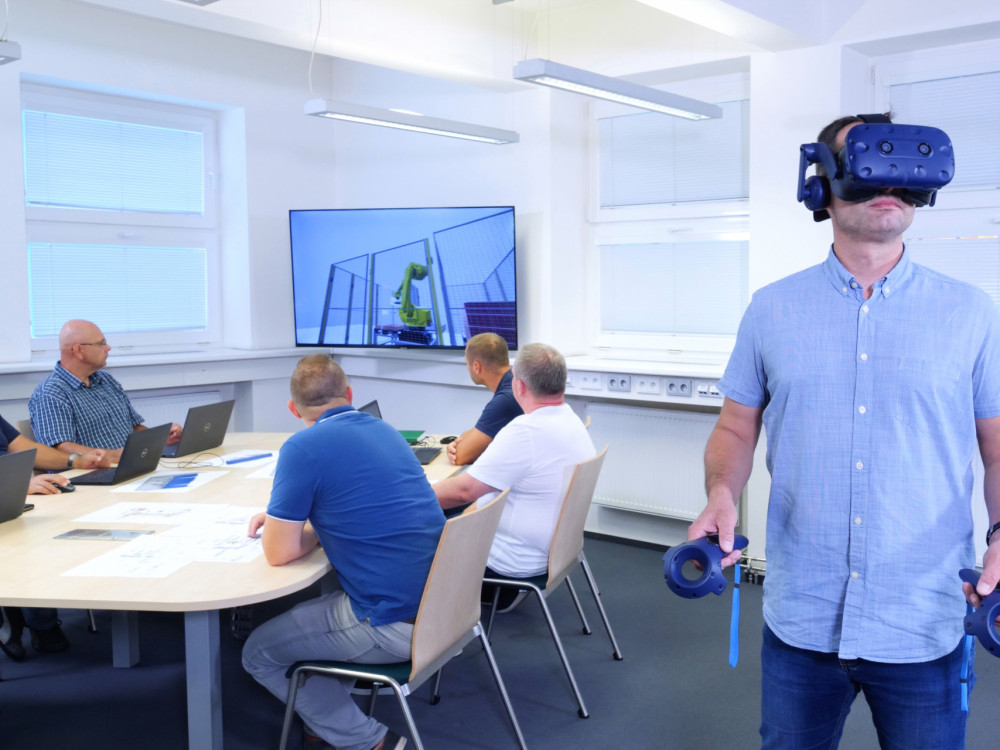Virtual reality for automated lines
A specialized simulation program helps OSTROJ to quickly design and simulate the flow of material or work of people or robots on complex conveyor lines, for example, in industrial plants in engineering, automotive, food, furniture, or pharmacy. The system takes into account all production elements, including complex factory layouts, and can predict which parts of the line are excessively busy, or where unnecessary stops occur. OSTROJ can thus design the most efficient solution. The customer can then view such a design interactively in virtual reality, which provides a real-time view of the conveyor system, to scale 1:1.
In a recent project for a large e-commerce customer, the Opava designers were designing a conveyor system with 3,000 meters of conveyors and equipment on an area of less than 30,000 m2. Adam Majewski, business manager of the Mining and Industrial Technologies division of OSTROJ, said: "We presented the entire complex solution in virtual reality. The customer thus had relevant data and, in fact, a finished solution even before the actual implementation."

Augmented reality for precise control
For quality control in production, OSTROJ, on the other hand, uses augmented reality, which enables it to quickly and efficiently control semi-finished products, welds, and finished products directly at the workplace, using the display of the so-called digital twin. Martin Štěpaník, project manager of OSTROJ, said: "Augmented reality allows us to quickly control quality at any stage of production. The controller displays a digital model, the so-called 'twin' of the product, directly on the tablet screen. He can zoom in on the image in any way, and special software displays compliance or non-compliance between the product and its 3D model. It is a significant improvement and acceleration of the entire quality control process, as we do not have to move the product to the technical control station. We can shorten the process between interoperative and output control by up to two hours, depending on the complexity of the product."
The Opava company plans to further expand and improve the use of these technologies, for example, for its robotic workplaces, with the aim of increasing the overall efficiency of control and production processes and its overall competitiveness.

 News
News